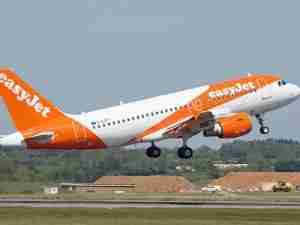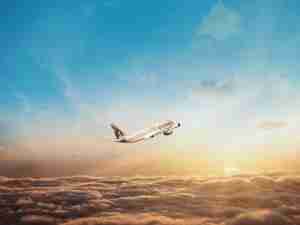After decades of starting successful airlines and dreaming up new ways to operate them, David Neeleman is again plotting a different course, this time for staffing.
The sole source of flight attendants for Neeleman’s upstart Breeze Airways will be full-time, online students at Utah Valley University. The recruits, potentially as young as 18 years old, will be trained at the company’s expense and work while they study. Once they finish school, though, the Breeze gig ends. They can apply for another job at the airline—but not as flight attendants.
Organized labor is crying foul about his plan for short-term workers at Breeze. Using college students could result in a less experienced and mature cabin crew, said Sara Nelson, president of the Association of Flight Attendants-CWA union. The evacuation of a US Airways jet that landed on the Hudson River in 2009 was managed by a crew with more than 100 years of combined experience, she said.
“The whole point of a work-study program is to get experience in a career field,” Nelson said. “This program turns that on its head. As soon as you get the experience, you’re no longer qualified.”
Neeleman, who created JetBlue Airways Corp., Brazil’s Azul SA and other carriers, has built his career by devising new low-cost strategies. Breeze is one of several budget airlines, including another startup, that will compete for people desperate for leisure travel after a year of restrictions because of the Covid-19 pandemic.
The work-study program at Breeze, which plans to start flights in May, gives the airline flexibility through a movable workforce and avoids the cost escalation that typically comes as employees gain seniority.
Breeze uses nonunion labor, which is typical of airline startups. Except at Delta Air Lines Inc., flight attendants at the biggest carriers are unionized. JetBlue operated for 14 years before its pilots unionized in 2014, followed by its flight attendants four years later. Neeleman left as chief executive officer in 2007.
Seniority Gap
The average seniority for U.S. members of the AFA-CWA union, the world’s largest for flight attendants, is 16 years. The six biggest U.S. carriers have a minimum age of 20 or 21 for flight attendants, though some smaller carriers hire people as young as 19 years old.
By limiting a student’s career path, Breeze also risks investing in trainees who may quit if more secure jobs become available, said Dan Akins, a veteran industry labor consultant who leads Flightpath Economics LLC.
“Short-term flight attendants are of interest to companies that want to keep labor costs down,” he said. “I don’t want to say it’s not going to work, but it seems it’s going to be a difficult road.”
Tom Anderson, Breeze Aviation Group Inc.’s chief operating officer, acknowledges that the program has challenges but says the company wanted to offer a way for people to get a college degree without amassing debt.
“I’m not going to say this is the right answer for everyone,” he said. “But this is an answer that’s got an appeal to a broad group of folks.” The company declined to make a flight attendant available for an interview.
The program includes people returning to college and getting a graduate degree, Anderson said. The youngest member of the current training class is 21 years old and the oldest is a grandmother of five.
Breeze will reimburse students $6,000 a year, enough to cover Utah Valley’s in-state tuition, if they complete 30 hours of courses and maintain a 3.0 grade point average.
The school was chosen because of its proximity to Breeze’s headquarters and Neeleman’s ties to Utah Valley, which awarded him an honorary degree in 2012. The company says it may expand the program to other colleges and to other parts of the country.
As flight attendants, students will be paid $1,200 for 15 nonconsecutive days of work a month or $1,600 for 20 days, which works out to a maximum of $19,200 a year. They’ll also get a $1,200 payment when they finish training. Breeze, which is based in the Salt Lake City suburb of Cottonwood Heights, will provide shared housing for flight attendants in a city in its network.
Flight attendants at other airlines generally start at $20,000 to $30,000 a year, and by year five make at least $30,000 to $40,000, according to the Association of Flight Attendants.
In Compliance
Breeze’s training complies with Federal Aviation Administration requirements, said Dean Melonas, a veteran flight attendant and instructor who oversees the program as the airline’s head of recruitment, culture and leadership development.
“They will be as well-qualified as any flight attendants coming out of any flight-attendant program at any airline,” he said.
Scott Trotter, Utah Valley’s senior director of communications, said the Breeze program is a good deal for students. “Even with the job caveat, they’ve got experience, they’ve got a degree, they don’t have student debt,” he said.
Samuel Engel, head of the aviation group at consultant ICF, said Breeze’s plan makes business sense from a cost standpoint.
“It’s hard to say a senior flight attendant produces more revenue for the airline than a junior flight attendant,” he said, estimating that the program could save Breeze $1 million per aircraft a year. “There is some value to mature judgment and experience in emergency situations. But there is also value in energy and strength.”
Neeleman has a track record of success bringing change to the industry, such as introducing paperless tickets. JetBlue was the first airline to install seat-back TVs.
Still, his staff was initially wary of Neeleman’s plan for recruiting flight attendants.
“When he first came to us, I said this is going to be really challenging, let’s try it in year three or four,” said Melonas, Breeze’s head of recruitment. “He said, ‘Try it out of the gate.’”










